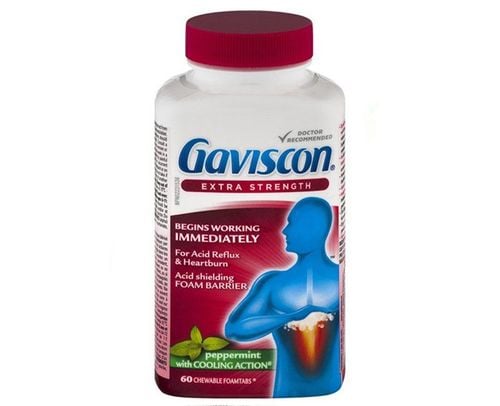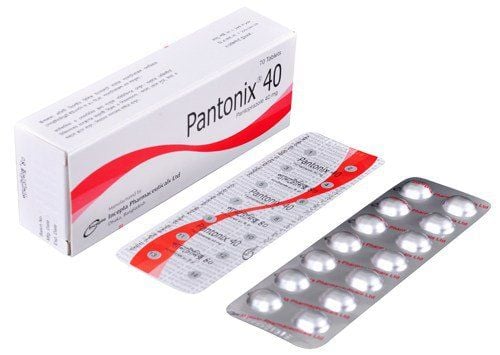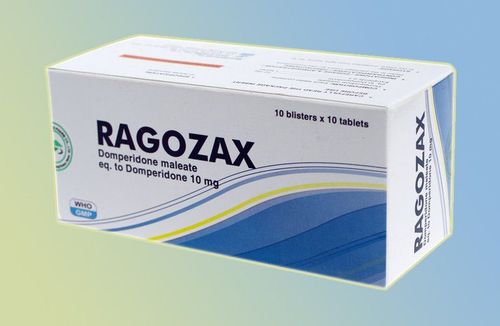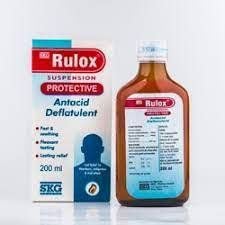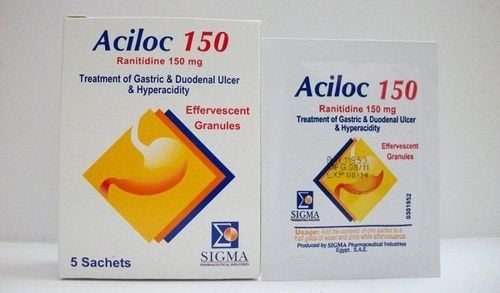This is an automatically translated article.
With the mechanism of reducing acid secretion and gastric juice, Ranitidine 300mg is a good choice for patients with peptic ulcer. Complying with the indications, the dose of Ranitidine 300mg drug will help patients improve treatment efficiency and ensure safety for health.
1. What is Ranitidine 300mg?
Ranitidine medicine 300mg has the main ingredient Ranitdin (as Ranitidine hydrochloride) and excipients: Microcrystalline cellulose PH102, Magnesium stearate, Colloidal silicon dioxide A200, Sodium starch glycolate, Hydroxypropyl methylcellulose 15cP, Hydroxypropyl methylcellulose 6cP, Polyethylene glycol 6000, Talc , Titanium dioxide, Mau sunset yellow lake.
Ranitidine medicine 300 mg is available in film-coated tablets, packed in a box of 3 blisters, each blister of 10 tablets. Ranitidine 300mg is a product manufactured by Domesco Medical Import-Export Joint Stock Company - Vietnam.
2. What disease does Ranitidine 300mg treat?
Ranitidine medicine 300mg used to treat duodenal ulcer, benign gastric ulcer, postoperative ulcer, reflux esophagitis, Zollinger-Ellison syndrome.
The drug is also used in necessary cases to reduce gastric secretion and acid secretion such as:
Prevention of gastrointestinal bleeding; Stress ulcers in critically ill patients; Prevention of recurrent bleeding in patients with hemorrhagic peptic ulcer; Prophylaxis before general anesthesia in patients at risk of acid aspiration (Mendelson's syndrome), especially in pregnant patients in labor; Treatment of symptoms of indigestion.
3. Usage, dosage of the drug Ranitidine 300mg
How to use Ranitidine 300mg:
Ranitidine 300mg is made in the form of film-coated tablets, so it will be taken orally. Dosage of the drug Ranitidine 300mg in adults:
2 times a day, each time 150mg in the morning and evening or once 300mg in the evening. Patients with benign gastric ulcer, duodenal ulcer drink from 4 to 8 weeks. For patients with chronic gastritis, take the drug for 6 weeks. For patients with ulcers caused by taking non-steroidal anti-inflammatory drugs, take the drug for 8 weeks. Patients with duodenal ulcer can take a dose of 300mg / 2 times / day, use the drug for 4 weeks to quickly heal the ulcer. Children:
With peptic ulcer, dose 2-4mg per kg body weight, 2 times/day, maximum 300mg/day. Maintenance dose is 150mg/day, taken in the evening. Peptic ulcer with Helicobacter pylori: Apply the 2 or 3 drug regimen below for 2 weeks, then add Ranitidine for another 2 weeks. Dosage is 300mg orally in the evening (or 150mg / 2 times / day). Prevention of peptic ulcers caused by non-steroidal anti-inflammatory drugs: 150mg/day/ 2 times. Treatment of gastroesophageal reflux disease: 150mg / 2 times a day or 300mg / time in the evening, for a period of 8 to 12 weeks. When cured, for long-term maintenance treatment, take 150mg / day / 2 times. Treatment of Zollinger-Ellison syndrome: 150mg/day/ 3 times. Can take up to 6g per day, divided into several times. To reduce stomach acid (prevent acid aspiration) in obstetrics: Give 150mg at the time of labor, then every 6 hours. Handling missed dose:
If the patient misses a dose, take it as soon as possible after remembering. However, if it is too close to the next dose, skip the missed dose and take the next dose at the scheduled time. Do not take twice the prescribed dose. Treatment of Overdose:
There are no special problems with an overdose of Ranitidine. Since there is no specific antidote, supportive and symptomatic treatment is required. Monitor and control unwanted effects. If necessary, hemodialysis to remove the drug from the plasma.
4. Contraindications of Ranitidine 300mg
Contraindicated Ranitidine 300mg in people with hypersensitivity to any component of the drug.
5. Drug interactions
Ranitidine very little inhibits the metabolism in the liver of some drugs such as anticoagulants Coumarin, Theophylline, Diazepam, Propranolol. The affinity of Ranitidine for cytochrome Paso enzymes is about 10% compared with Cimetidine and the degree of liver enzyme inhibition is 2-4 times less. Combination with Glipizide lowers blood sugar but not much. Co-administration with Enoxacin has reduced bioavailability. When Ketoconazole, Fluconazole and Itraconazole are used with ranitidine, these drugs are reduced absorption because ranitidine reduces the acidity of the stomach. Concomitant use causes a small increase in serum theophylline concentration and toxicity. Co-administration with clarithromycin increases plasma concentrations of Ranitidine (57%). Co-administration with Propanthelin bromide increases peak serum concentrations of Ranitidine and slows absorption.
6. Notes when using Ranitidine 300mg
Ranitidine drug is eliminated by the kidneys, so when there is kidney failure, the concentration of the drug in the blood plasma increases. Therefore, it is necessary to reduce the dose in patients with renal impairment. Patients with severe hepatic impairment, acute porphyria, are at increased risk of undesirable effects and the risk of overdose. People with heart disease may be at risk for bradycardia. Treatment with H2-antihistamines may mask the symptoms of gastric cancer and delay its diagnosis. Therefore, in the presence of gastric ulcer, the possibility of cancer should be excluded before treatment with Ranitidine. Ranitidine is excreted in milk and should be used only when clearly needed during lactation. The drug may cause dizziness and drowsiness. Therefore, caution should be exercised when driving vehicles and operating machinery.
7. Ranitidine 300mg . side effects
Common, ADR > 1/100:
Whole body: Headache, dizziness, weakness. Digestion: Diarrhea. Skin: Erythema. Uncommon, 1/1000 < ADR < 1/100:
Blood: Leukopenia, thrombocytopenia. Liver: Increased transaminases. Rarely, ADR < 1/1000:
Systemic: Hypersensitivity reactions such as urticaria, bronchospasm, anaphylactic shock, angioedema, myalgia, arthralgia have occurred. Blood: Agranulocytosis, pancytopenia, even bone marrow hypoplasia. Endocrine: Enlarged breasts in men. Gastrointestinal: Pancreatitis. Skin: Erythema multiforme. Liver: Hepatitis, sometimes with jaundice. Eyes: Disorders of eye accommodation. Inform your doctor about any unwanted effects you may experience while using the drug.
8. How to store Ranitidine 300mg
Store in a cool, dry place, at a temperature not exceeding 30°C, in the original packaging and protected from light. Keep out of reach of CHILDREN. Expiry date: 36 months from date of manufacture. Above are the uses, doses and notes when using Ranitidine 300mg. To ensure safety for your health and maximize the effectiveness of your treatment, you need to take Ranitidine 300mg exactly as directed by your doctor.
Please dial HOTLINE for more information or register for an appointment HERE. Download MyVinmec app to make appointments faster and to manage your bookings easily.




